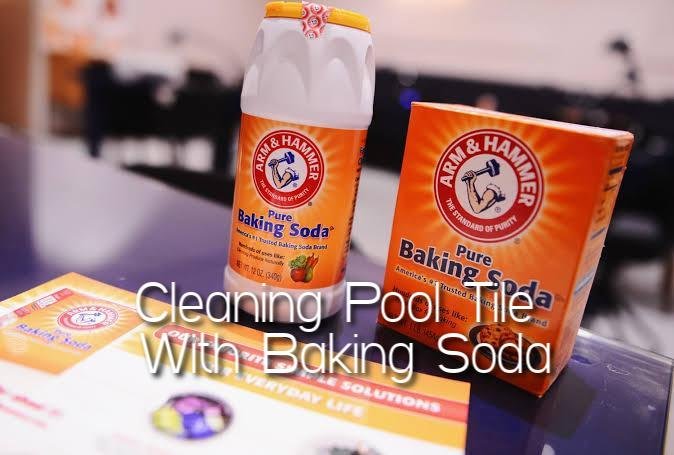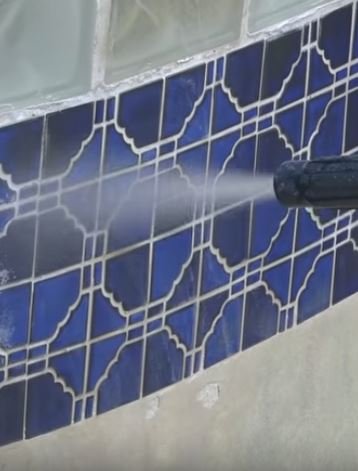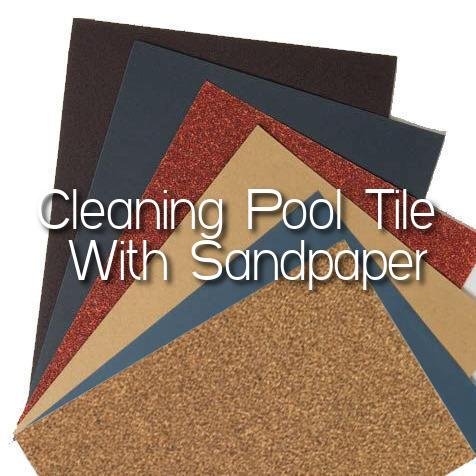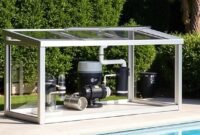Having a swimming pool in your private home will be a pleasure that is second to none. In addition to your exercise facilities, the private swimming pool is also a place to play and gather your big family when meeting together. However, having a swimming pool means you have to pay extra attention to the cleanliness aspect too.

In addition to the pool water, pool tiles, you must pay attention to cleanliness. Many types of stains will interfere with your pool’s cleanliness and aesthetics, such as moss or calcium scale. Here are the ingredients of tile cleaner for pools that you can use at home.
Cleaning Pool Tile With Baking Soda
The first ingredient that you can use is baking soda. You can easily find baking soda in your kitchen as a cake cooking ingredient. How do you use baking soda to clean a pool? First, you must know the type of stain or crust on the pool floor. Generally, calcium scale is the stain and crust found in your pool.
What are the characteristics of a swimming pool floor with a calcium scale? If you are in an environment that uses hard water, then there will be calcium deposits that accumulate on your pool floor. Besides, if your pool feels hot/warm and has high pH and alkaline levels, then the calcium scale will form slowly.

Using baking soda in cleaning the swimming pool floor is very easy. First, you must mix baking soda and water in balanced proportions. Then, pour the solution slightly to the floor where the stain is tasted. Brush the stain that has been given the solution. Use a brush that doesn’t damage the floor, like nylon. Then rinse with clean water (if possible warm water). Continue to repeat these steps 2-3 times if the calcium scale is thick enough.
Acidic Gel Pool Tile Cleaner
The second ingredient you can use is the acidic gel pool tile cleaner. You can find this material easily in stores that sell household appliances and cleaners, just like if you use baking soda, acidic gel cleaner is used to clean the swimming pool floor with calcium and hard water deposits (because this problem is usually found in swimming pools). However, with an acidic gel cleaner, you can also clean lime stains.
How to use an acidic gel cleaner is very easy. Apply the acidic gel cleaner to the floor with the stain you want to clean. Apply this gel using a cloth to minimize contact with your skin. Then, leave it for about 15 minutes. After that, use a nylon brush to brush the gel.
Make sure the brush has been moistened with water. When brushing, use circular motions. Then, flush with water or wipe with a cloth that is not used anymore. Repeat these steps until the stain disappears. For lime stains, make sure your swimming pool floor is dry first.
How To Clean Pool Tile With A Pressure Washer
The third tile cleaner for pools that you can use is a pressure washer. Yes, a machine that emits high-pressure water is very effective for cleaning your swimming pool floor. Using this machine is perfect for those who don’t want to bother going down to the pool to scrub the pool floor. Of course, compared to others, using a pressure washer is more costly to buy or rent a tool.

So how to use a pressure washer? First. If there is pool furniture around and the edge of your pool, you can get rid of it first. After that, you can start turning on this tool and direct the spray to the floor stain in the pool. For starters, try spraying in one area first for 30 seconds to see whether there is damage or not due to high-pressure water spray.
If not, continue cleaning in other areas. One tip is not to direct the spray too long at one point. Move slowly from one point to another before returning to the starting point if you want to clean again.
Cleaning Pool Tile With Sandpaper
The last material you can use to clean your swimming pool is sandpaper. If you are afraid to try chemicals in your pool (such as baking soda or acidic gel), you can use sandpaper.
Or you want to try a material that is clean physically that is safe (if using a pressure washer is feared to damage the floor), sandpaper can be your choice. Also, this sandpaper can be the cheapest or most economical choice compared to other materials.

The method is straightforward. When your swimming pool is dry, rub the sandpaper on the floor with stains or crust. However, sandpaper has weaknesses.
Although cheap, the cleanliness of using sandpaper will depend on your energy in rubbing stains. Also, using sandpaper will be quite a waste of your energy and time – so make sure you have a lot of free time when using sandpaper.
If you have a large swimming pool and use sandpaper as a tile cleaner for pools, you must have extra energy. The sandpaper is suitable if there are not too many stains or crusts and the size of your pool is not too large to make it more efficient. Choose materials that fit your efficiency.


